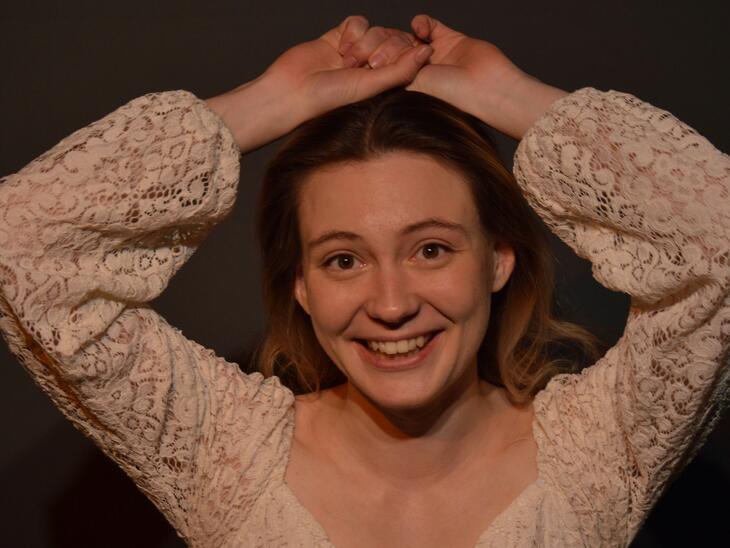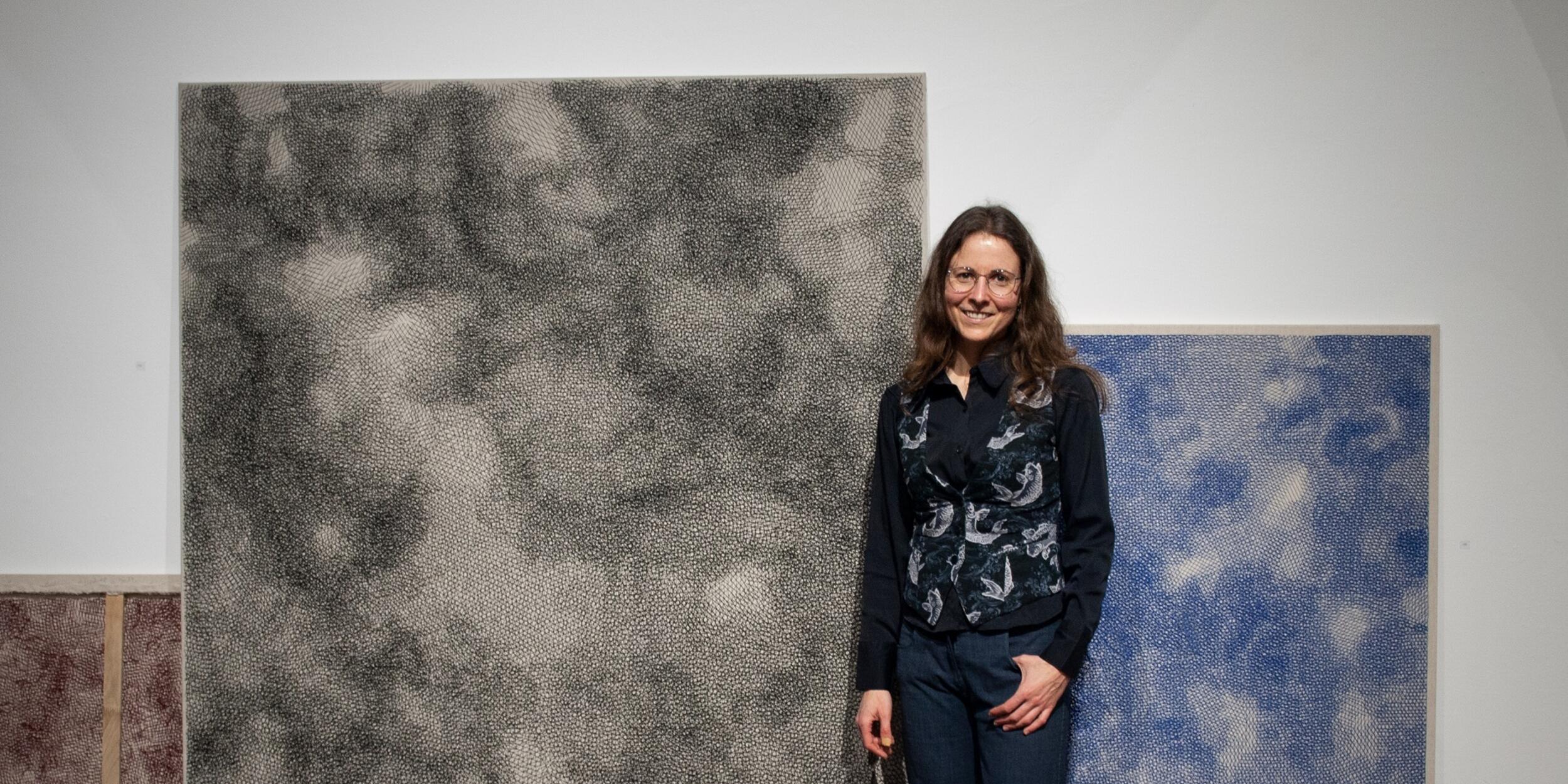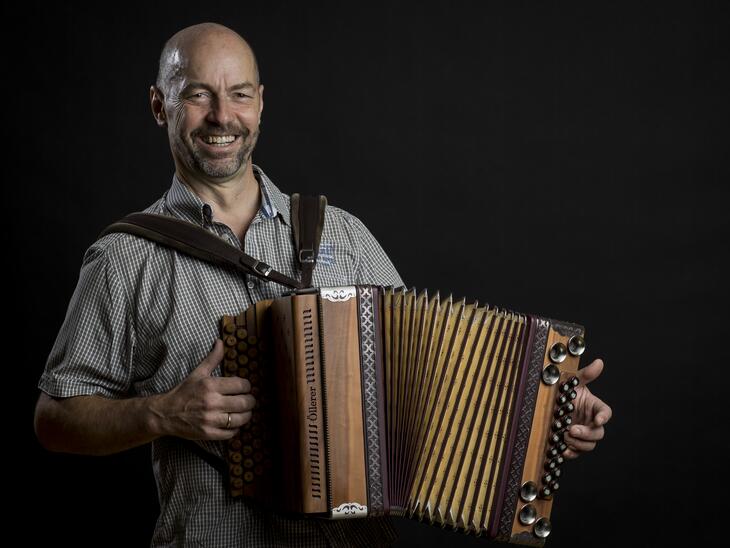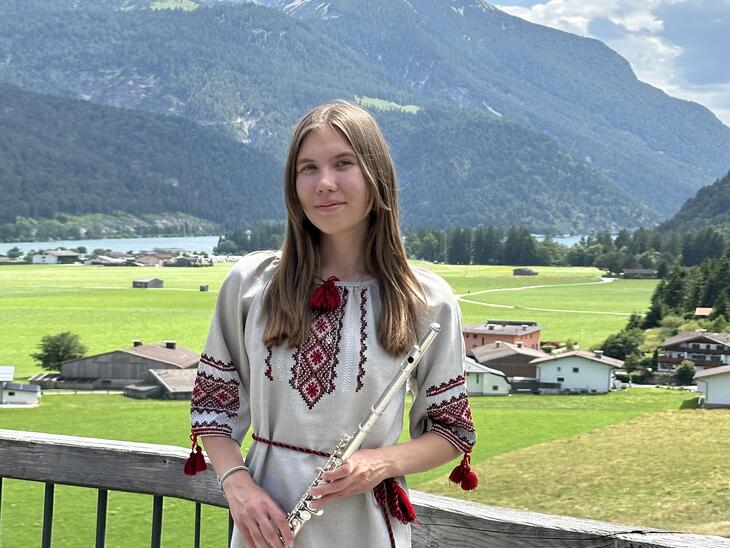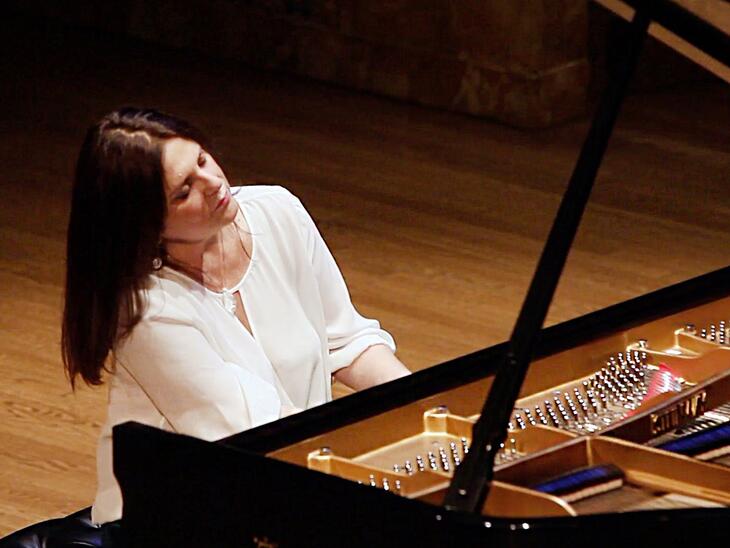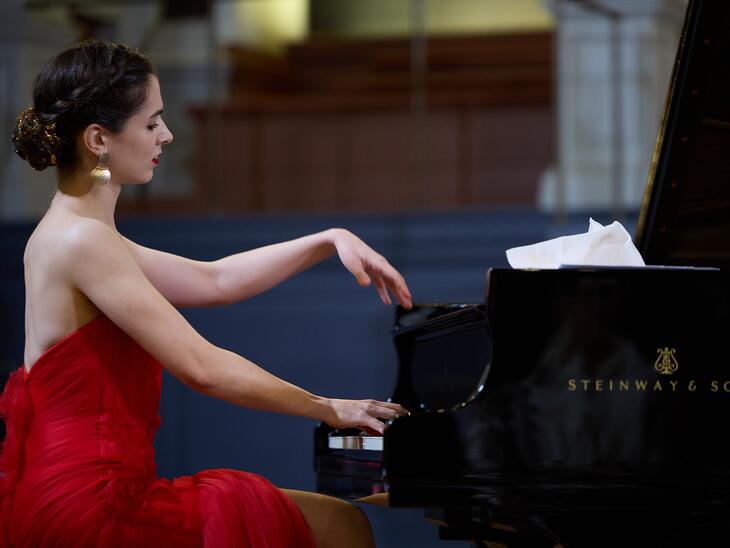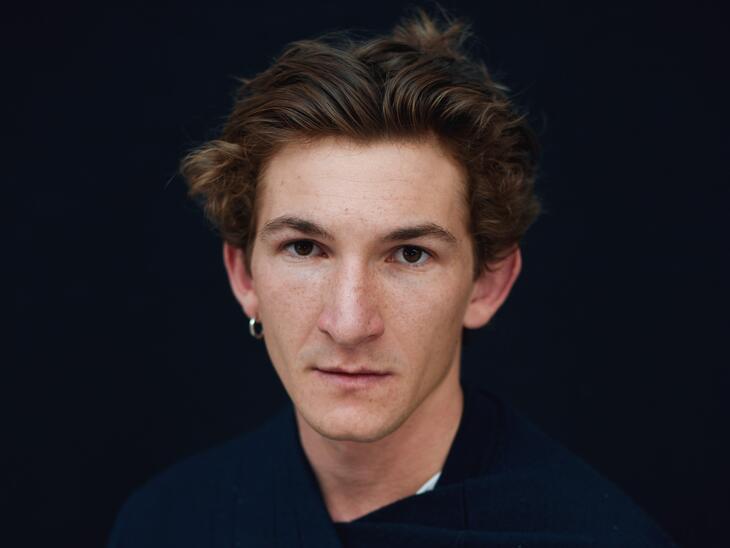Are you a freelance artist and art educator? How do you reconcile the two and what is the beauty of your work?
I am relatively new to the pedagogical field. I'm only in my fourth year working at the HBLA for Artistic Design - a vocational school. That means artistic education is the main focus and that is very challenging. What's nice is the social and interpersonal aspect of teaching, the "critical minds" I meet. It's a beautiful combination of theory and artistic practice. That was very important to me. Art history and art science were already very interesting to me during my studies. Through the pedagogical work, I can tie in with that again. This is a great enrichment for my practical artistic work. I also taught at a grammar school, but that wasn't quite my subject. It depends on the type of school and the teaching content. I feel more "at home" at the artistic vocational school. Here I can live my vocation, so I am very happy that this opportunity has arisen.
How do you find the right place as a teacher?
Before you are hired, you usually do an internship. You realize very quickly whether the type of school and the work are right for you. Do you see potential for the future generation of our graduates in the pedagogical field? Yes, as long as there are no further cuts in hours. Technical and Textiles have already been merged, and there is talk that Fine Arts will be bundled with the other two. If this plan is implemented, the situation will be more difficult. Whereby I am of the opinion that one must not "rationalize away" the craft, creative and artistic! It is a very important area! At the moment, interested graduates do get jobs. Possibly not immediately where they want to go, but the paths are open in principle. As far as I know, it is easier in Tyrol and Vorarlberg, in Upper Austria and Salzburg it is a bit more difficult because of the local training centers. People often want to stay in those places. Now about your artistic path. Your work has just been shown in two exhibitions.
A common thread runs through your artistic work. Under the title "Cumulations" you create spatial installations, graphics and painting. You work in different techniques and with different materials: Nets, yarn, sheet steel, varnish & putty, ballpoint pen, ink, oil, acrylic.
How can we imagine the process of creating a project? What is important to you?
With the line and its accumulation, with condensation and dissolution of hatching and the possibility of suggesting spatiality with it, I have been occupied for many years. At the same time I am interested in perception and irritation, the effect on the viewer and his interaction, as well as the dimensions and the use of different materials and techniques in an unconventional way. The breadth of my artistic work was already founded in my education during my school years. It was then that my awareness of different materials emerged. During my studies I was engaged in painting and graphic arts and textile art was important and present for me from the beginning. I also sew my own clothes. The craftsmanship is very important to me. A single technique would quickly become too boring for me (laughs). One thing very often leads to another, sometimes by accident. Orange nets fascinated me in their structure and there were parallels to my graphics. That's how I came up with the idea of putting "net installations" in the room. A lot of things have to be tried out to see if they work. All my works are long, the leisure must remain. The way to the exhibition is a subordinate step. One of the ways I've shown the net installations is in public spaces, so that people come across them directly as they walk by. They recognize the material they often deal with in a different context. I want to challenge the viewer to look more closely. To develop an analytical view and to question things.
Does the theme of sustainability play a role in your work?
I also work with oil and acrylic, but of course I consider which materials to use and when. Working with nets is more in line with my basic attitude, of course. The handling of the material is the most important thing. Everyday or disposable material is always used in my work in an unconventional way. With your exhibitions you are regularly represented in Upper Austria.
How does a young artist find a suitable exhibition space?
A few spaces approached me, so I was lucky (laughs). For example, an exhibition organizer saw works of mine and offered me new exhibition spaces. One thing follows another. You can't give up, even if there are phases when things aren't going so well. You do need a certain amount of stamina. Among other things, I'm active in an art association, and that's how we've been able to make "vacant spaces" in the city accessible and use them for exhibitions in recent years. These were also "pandemic-friendly" spaces. In the last two years, a lot of art has been digital.
What was your personal experience with that?
Digital formats allowed you to participate in a lot of things you wouldn't have seen otherwise. As soon as the museums reopened, people started coming back to the exhibitions with joy. The real experience and impact of a work cannot be replaced by the digital world. But of course the digital also has great advantages, it's a complement. As an artist, I was not restricted by the pandemic, but in the area of teaching I was. I'm not convinced about long school closures. The interpersonal is an essential factor in teaching!
What conditions do visual artists need from your point of view?
A different status. Especially in the compulsory school, the artistic subject is seen as a "recreational subject". On the one hand, it's good that young people can express themselves freely in a subject without pressure, but on the other hand, the subject is unfortunately devalued as a result. Yet the work with the hands and the creative processes are so important. There is also a need for calls for proposals, grants and residencies are not equally accessible everywhere. There is certainly still a need for action here.
What about work spaces? What spaces are available? How does one get a studio?
Affordable spaces are difficult to access. The need is great. It is possible to form studio communities. There are a few places/institutions that offer spaces at favorable conditions, e.g. through grants, but that is certainly still too few.
What do you want to give young artists to take with them? What do you think is important for an artistic and pedagogical career?
You should already look for opportunities during your studies. As long as you are at the university, everything is organized. The work space, the exhibitions. Some planning of the next steps, whether it's a stay abroad, an exhibition, further studies, an internship, etc. is certainly advisable. Stays abroad, preferably for a whole year, I would strongly recommend! They enrich immensely.
Where could there have been more in your studies?
We were very well supported in our artistic practice and in our own work. But it was almost too little for teaching at a school. From today's perspective, I would have liked to have learned even more techniques and practices of teaching. Personally, I was very happy about the teaching situation at the Mozarteum University, but looking back, the pedagogical teaching could have been even more multifaceted. Whereas it will always be the case that you have to work out a lot of things yourself. I can say that my education was not a pure "teacher training" - but that was also the reason why I decided to study at the Mozarteum. It was so much freer than elsewhere. But the decision about priorities has to be made by everyone. I am still happy with the decision I made. You have completed a varied educational path. You pass on your knowledge to young people at a vocational school.
Was your career path planned like this from the start?
No, I actually wanted to study art. Pedagogy was the safeguard my family insisted on (laughs). Today I'm glad I did it that way. Teaching art is a great enrichment for me and, last but not least, it shapes my personality.
